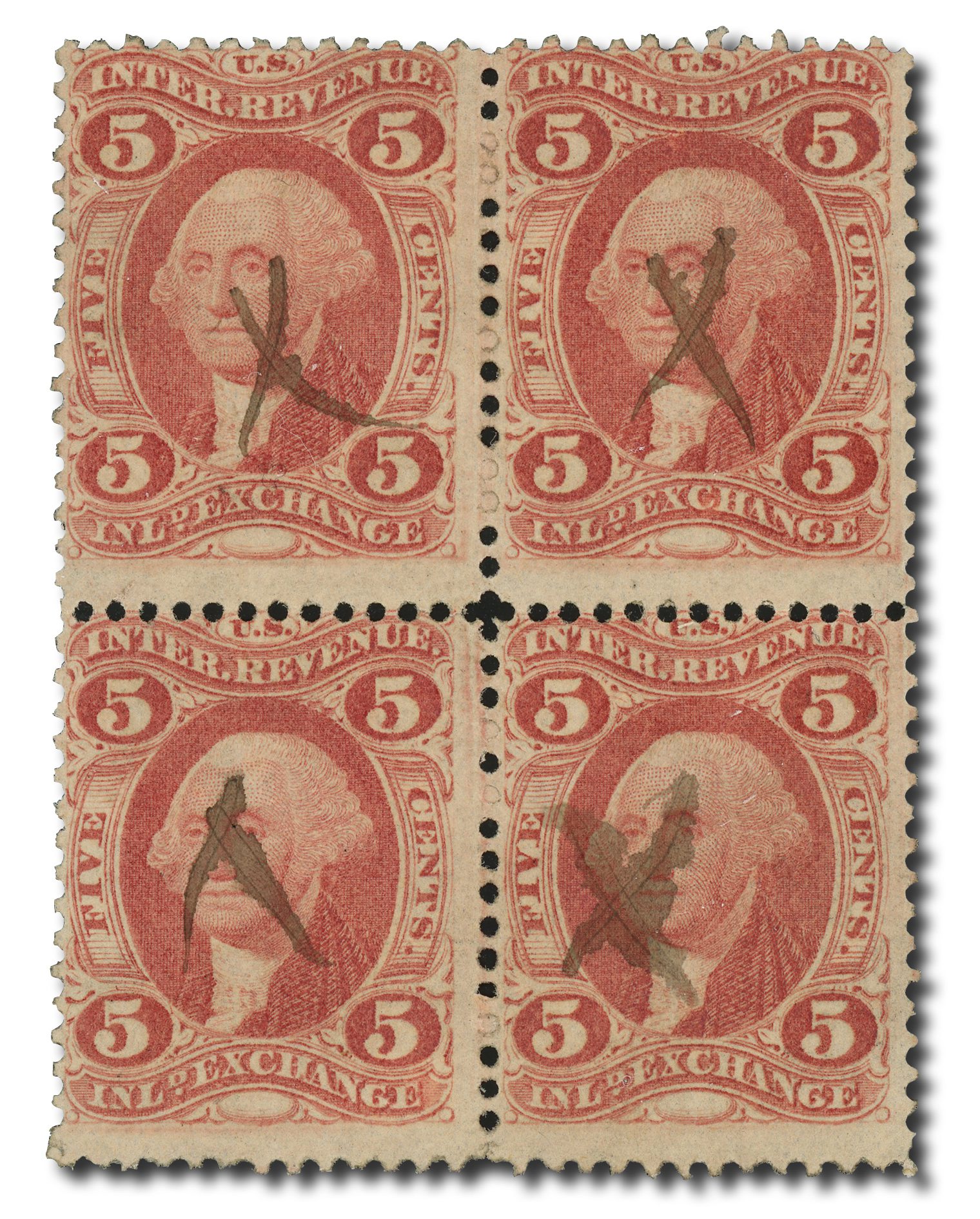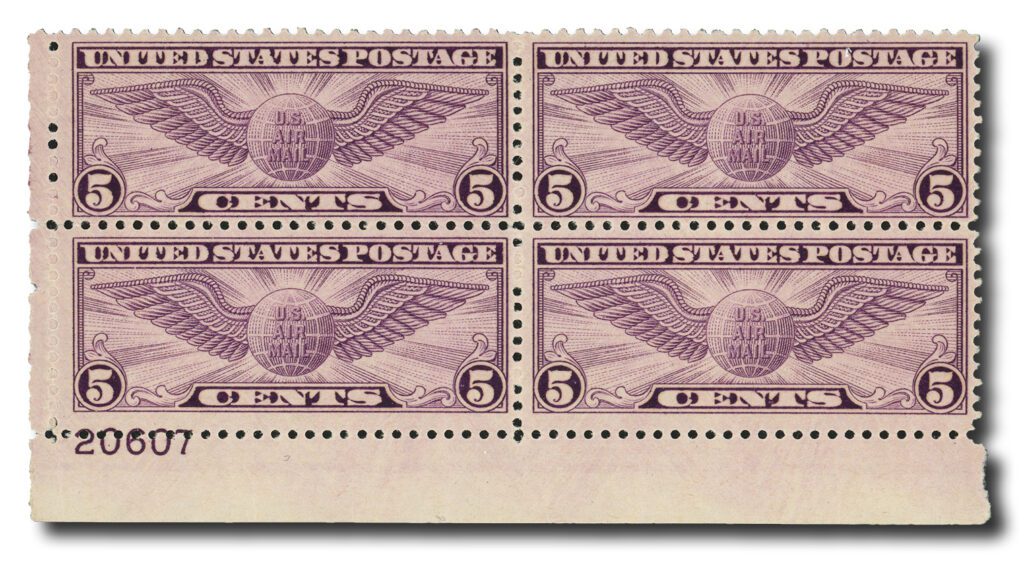Blind Perforations on Postage Stamps

The many blind perforations on this sheet are quite noticeable.
When examining older stamps, you may notice some perforations that didn’t quite punch all the way through. These are known as blind perforations—a production quirk that’s familiar to most stamp collectors. But what exactly are blind perforations, and do they matter to your collection? Let’s take a closer look.
What Are Blind Perforations?
Blind perforations occur when the pins in a perforating machine fail to fully pierce the stamp paper. Instead of a clean hole, you’ll see a small bridge of uncut paper or just a faint impression where a hole should be. This is most often seen on classic stamps from the 19th and early 20th centuries, when perforating technology was less reliable than it is today.

You can see several blind perfs down the middle of this used block of 4.
Why Do Blind Perforations Happen?
There are several reasons for blind perforations:
- Worn or broken pins in the perforating machine
- Misalignment of the perforating mechanism
- Thicker or multiple sheets being perforated at once
- General wear and tear in early stamp production
These factors made blind perfs a routine part of stamp manufacturing in earlier eras.

The vertical perforations on this mint plate block feature a number of blind perfs, particularly along the selvage to the left.
Do Blind Perforations Affect Value?
Blind perforations can negatively impact the value of a stamp, though the effect is usually minor and context-dependent. While blind perfs are not uncommon on older stamps and are generally considered a normal production quirk, they are still viewed as a minor fault by many collectors and expertizing services.
The impact on value depends on several factors:
- Severity and Visibility: If the blind perforations are visually distracting or affect the overall appearance of the stamp, they can lower its grade and, consequently, its value. The more noticeable the blind perfs, the greater the potential devaluation.
- Number and Location: A single, subtle blind perf may have little to no effect, but multiple or prominent blind perfs—especially if they disrupt the stamp’s border—can be more detrimental.
- Market Expectations: For common stamps, blind perfs are often ignored in value assessments. However, for high-grade or rare issues, collectors may expect cleaner perforations, and the presence of blind perfs can reduce desirability and price.
- Comparison to Other Faults: While not as serious as tears, thins, or missing perforations, blind perfs are still considered a production fault and are treated as such in professional grading.
In summary, blind perforations are a minor but recognized fault that can lower a stamp’s value, especially if they are obvious or affect the stamp’s visual appeal. For most classic stamps, the effect is modest, but for high-end or investment-grade material, collectors and grading services do take them into account when determining value.
Should Collectors Worry About Blind Perforations?
Generally, no. If you’re collecting older stamps, you’ll encounter blind perforations on occasion. They are not a reason to reject an otherwise nice stamp. The overall condition—centering, color, gum, and absence of major faults—remains far more important to a stamp’s value and appeal. For collectors, it’s best to view blind perfs as a normal, minor flaw—one of many that make classic stamps interesting.


I have a Japan Scott #899 MNH Pane of 20, with (3) missing (blind) perforations.
Some imperfectly perfed stamps have extra value as “freaks” or “oddities”. I have an upper left plate number block of four of Scott #2723 —the 29¢ Hank Williams. The upper left stamp has two clear perf faults: the 2nd hole up from the lower right corner is missing (blind perf), and the 5th hole to the right of the lower left corner is shifted up by half of a hole’s width. That’s freaky enough, but just now I noticed that the entire bottom row of perfs waves slightly up and down, and some adjacent holes are closer together than others. A regular AM/FM plate block!